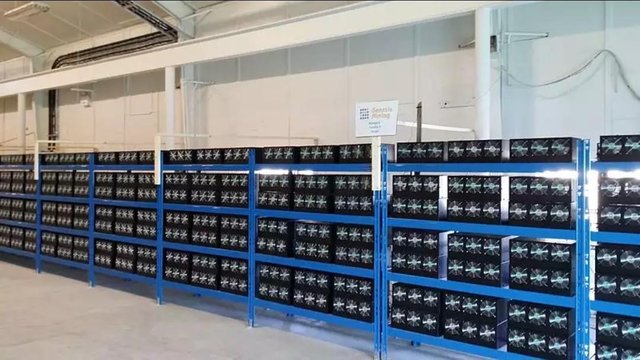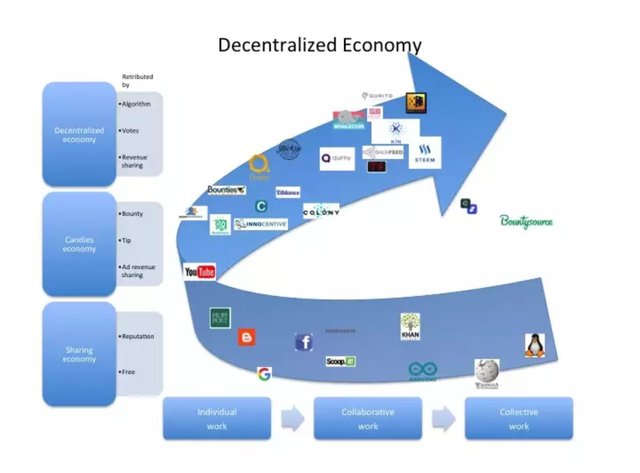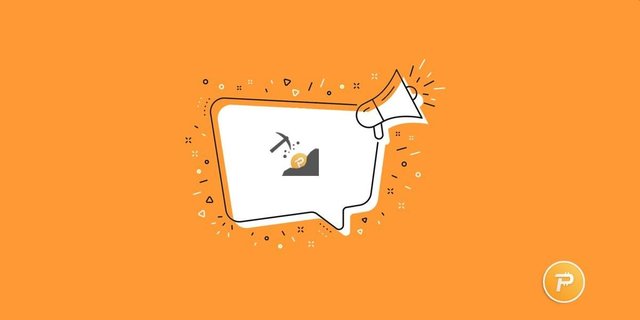Switch on the mines, get involved! — Proof-of-work and the cryptocurrency ecosystem.

A cryptocurrency mining farm license
Switch on the mines, get rewarded when you solve a puzzle… Sounds plain enough, however the proof of work system means much more than this to the cryptocurrency ecosystem and serves more purpose in the creation of a healthy transaction system than the value of the rewards earned for performing these duties.
Despite being popularly associated with cryptocurrency and the blockchain technology, the proof-of-work protocol have been in existence long before the advent of cryptocurrency. Introduction of this concept in cryptocurrency have served a huge point of attraction and the carefully crafted work concept and its integration into cryptocurrency have not only made the blockchain technology a sophisticated technological invention, it fueled the communal participation in the process.

Schematic of flow in a decentralized autonomous organization license
Decentralization takes away third party influences and censorship, but not the need for security. Simply put, while blockchain technology provides a more secure way to perform financial transactions, the concept Proof-of-work adds a ton of security and promotes peer to peer interaction in the foregoing.
By requiring miners to continuously perform certain tasks, getting your mines up or joining a proof-of-work minning pool means being an active member of the cryptocurrency ecosystem as this process requires a tangible investment in terms of time, financial and material resources.
Proof-of-work protocol and the cryptocurrency ecosystem
Challenge response in POW
‘Resourceful interaction', probably there’s a better phrase to describe the impact of proof-of-work on the growth and development of interactions over the blockchain, nevertheless, it is a good attempt at summarizing the impact of POW in a ‘two word phrase' lol.
POW creates an environment in which every member is given an opportunity to contribute to the growth of the ecosystem, hence furnishing the idea of P2P further by channeling the power of transaction verification to a group of people (miners) instead of an independent third party.
Here’s how the POW concept improves the cryptocurrency ecosystem:
Creation of a Healthy competition:
To verify a transaction, it must be mined into a block, a block is a collection of transaction records. In a POW blockchain, miners are required to solve a puzzle before the block is mined, this verifies the legitimacy of the blocks. The mining reward is given to the miner who solves the POW problem first. The problem is solved with brute force, requiring an enormous amount of attempts. The network miners compete to be the first to find solution for each block POW problem.
The miner who finds the right solution to the problem announces it to the whole network and receives the cryptocurrency reward. This creates a healthy competitive environment with many miners attempting to solve the puzzle. This interesting concept attracts more individuals to join the mining process, hence creating a more peer-to-peer interactive ecosystem.
Security:
One of the best security tactics is placing a number of guards over a valued asset. The proof-of-work protocol employs a similar concept to protect the blockchain from malicious blocks. The miners are the guardians of the blockchain. By requiring some work from the service requester, the proof of work protocol protects the blockchain from several malicious activities such as spamming and Denial of service (DOS) attacks.
Considering the tough nature of proof-of-work problems and the fact that solving this puzzle requires a large number of attempts, manipulating the blockchain through the aforementioned means takes much from the perpetrators, this takes the frequency of such attacks and even when these attacks are launched, they are effectively blocked.
To spam on a network, one is required, one is required to send a lot of requests to the blockchain in contrast to sending a single request.
The amount of work required is proportional to the number of requests. This efficiently reduced spamming. To add a malicious block, the requester must have a computer more powerful than 51% of the network; currently, many POW blockchains are adapted to survive 51% attacks, making it a more tedious process for people attempting to launch such attacks on the blockchain.
Reward and supply system
For efforts comes rewards, compensation for work done comes in various forms, for work done on a proof-of-work blockchain, the miner is rewarded with the traditional cryptocurrencies. In rewarding miners, more cryptocurrencies are mined into circulation, hence increasing the supply and encouraging the circulation of the cryptocurrency in question. On successful solving of the proof-of-work puzzle, the miner who first solves this puzzle announces and is rewarded from the mines, hence mining the amount of rewarded cryptocurrency into circulation. Via this means, inflation is controlled, this also adds a time function to the Inflation of the cryptocurrency. In contrast to pre-mined cryptocurrencies, proof-of-work mining adds to circulation ‘with time’s instead of bringing the whole supply into circulation at once.
Value system
Easy come, easy go… the fact that POW blockchains requires the miners to perform some active duties before they are rewarded with the cryptocurrency not only adds a time function to inflation, it adds some value to the cryptocurrency in question. Miners spend a lot to set up their mines, running a mine also requires use of electrical energy and can also be time tasking. When a miner gets to solve a POW problem first and is rewarded with the cryptocurrency, the price they sell this for reflects their investments in the mining process. For a POW blockchain with a high mining threshold and requiring costly mining equipment, time tasking involvements and a relatively small amount of cryptocurrencies rewarded per time; the miner tends to attach much value to these rewards and is less likely to sell them at a loss.
Looking to get actively involved in the blockchain technology, mining a proof-of-work coin is surely the best route to understanding how best the blockchain and cryptocurrency works. Setting up a mine might sound more tougher than it actually is.
Apart from the cryptocurrency reward, experiencing how a community owned and controlled financial systems perfectly works via the blockchain technology is a priceless experience. Get your mines to work!
Ready to mine? Pascal coin is one of the best POW coins to mine.
Mining Pascal coin
Pascal is a fast, zero-fee, scalable and totally decentralized cryptocurrency designed for payments and layer-2 applications.Enabled by the SafeBox technology to become the world's first deletable blockchain system, Pascal possesses unlimited potentials.
Just like every other POW coins, pascal is earned via the process of mining as miners are rewarded in pascals for solving the POW problem. With the development of the RandomHash protocol,a GPU and ASIC resistant hashing algorithm, the RandomHash protocol was developed to ward off the effects of GPU miners and shift the mining power to the CPU miners while also ensuring that mining can be actively done by numerous miners independently.
The RandomHash is a GPU and ASIC resistant high-level cryptographic hash algorithm which serially combines other well-known hash primitives, with the RandomHash, calculations for a nonce are dependent on partial calculations of other randomly selected nonces, this successfully shifts the mining ecosystem from the parallel hashers to the serial hashers. Hence for CPU miners (which is virtually everyone who owns a computer system), Pascal is a good choice of POW coin to mine.
Pascal can be mined in several ways:
Solo mining: Using a computer with a good hashpower, you can easily mine Pascal on your computer. Mining Pascal is easy to do with almost any computer. PascalCoin can be mined on Intel and AMD 64-bit CPUs and Nvidia GPUs (currently) using Windows 7/8/10 or Linux.
Pascal can be mined using the pascal miner, RhMiner or Nanominer, there might be a development fee charge of about 1% of the mining rewards.
Read this guide to set up you solo mine and start mining: https://www.pascalcoin.org/how_to_mine
Pool mining: using a computer with a low hashpower, joining a mining pool may be the best option, pool mining also ensures a consistent payout and is also best for starters. When choosing a pool, consider the fee structure and the size of the pool, these goes a long way to determine your payouts. Having chosen a pool to mine to, here’s a guide help you set up your pool mining: https://www.pascalcoin.org/content/how_to_mine_pool
Pascal’s screensaver mining: This could be even more interesting!, it’s time to get your idle hashpowers to work, the pascal screensaver miner enables you to mine Pascal coin using idle computers. It is targetted for both the casual miner, and large scale computer labs or offices that want to earn cryptocurrency. PascalCoin is completely mineable with CPUs, so you do not need to have expensive graphic cards in your machines.
Here’s an extensive guide to screensaver mining : https://www.pascalcoin.org/content/how-to-use-screensaver-miner
Now mining Pascal? Follow the project for exclusive updates.
All new releases on github: https://github.com/pascalcoin
The discussion continues on discord!: https://discord.gg/xv5ByZW
Follow us on twitter: https://twitter.com/PascalCoin
All recent updates on facebook: https://www.facebook.com/PascalCoinOfficial/
Follow us on LinkedIn: https://www.linkedin.com/company/pascalcoin
Resources